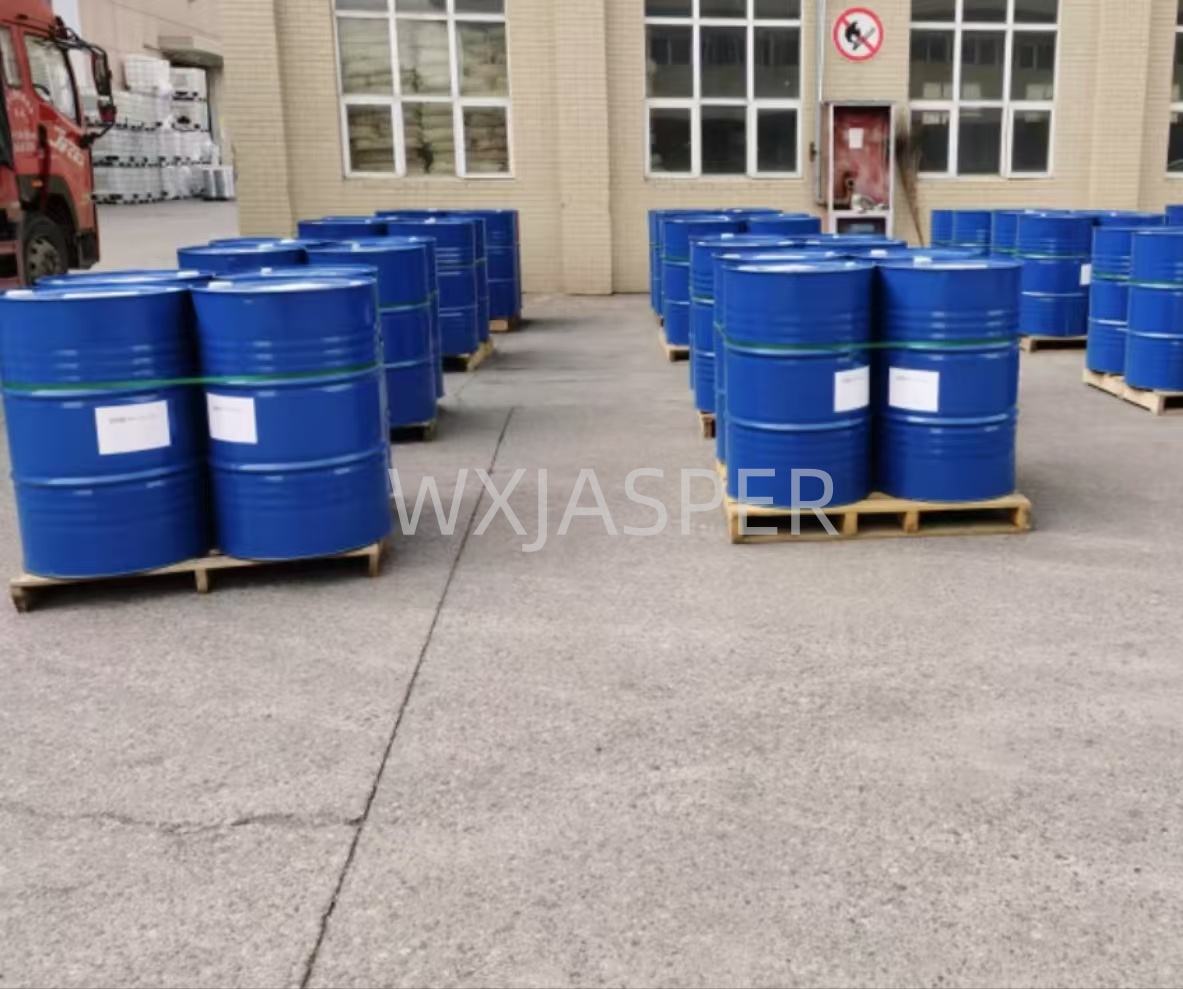Product Details
CasNo: 9003-11-6
MF: HO.(C2H4O)m.(C3H6O)n.H
Appearance: liquid
Delivery Time: 15 days
Packing: 210kg/drum
Purity: 99%
Product Details
Defoamer (Brand Model: DF - 103)
- Packaging Specification: 210 kg/blue iron barrel
- Main Ingredient: Polyether. It is a linear polymer synthesized by ring - opening polymerization of ethylene oxide, propylene oxide, etc. under the action of catalysts.
Product Properties
- Appearance: Usually a colorless to light yellow transparent or translucent liquid with good fluidity.
- Physical Properties: It has a certain viscosity, which can be adjusted according to production needs; the density is generally 0.9 - 1.1 g/cm³; it has a relatively high flash point, so it has good safety in use.
Action Principle
- Low Surface Tension Effect: Polyether molecules can quickly migrate to the gas - liquid interface and reduce the surface tension of the liquid. After the surface tension of the bubble decreases, the film wall becomes thinner and the stability decreases, so it is easy to burst.
- Dual Functions of Bubble Breaking and Foam Suppression: On the one hand, the defoamer can quickly penetrate into the liquid film of the foam, destroy the elastic film of the foam and cause the foam to burst. On the other hand, it can form a dynamic protective film in the system to prevent the formation of new foam and play a long - term foam suppression role.
Performance Characteristics
- Efficient Defoaming: In the industrial fermentation process, it can quickly eliminate a large number of foams generated by microbial metabolism, aeration and stirring, etc., to ensure the smooth progress of the fermentation process. For example, in antibiotic fermentation, it can avoid problems such as escape of liquid from the fermentation tank and contamination caused by excessive foam, and improve the fermentation unit and product yield.
- Good Temperature Adaptability: The polyether - based defoamer has a wide range of operating temperatures. It can stably play the role of defoaming and foam suppression in the common temperature range (25 - 40℃) during the fermentation process, and will not lose activity or produce adverse side reactions due to temperature changes.
- High Chemical Stability: It has good tolerance to most such chemical substances as acids, alkalis and salts in the fermentation system, and does not chemically react with fermentation raw materials and products, and will not affect the quality and purity of fermentation products.
- Good Biocompatibility: In the industrial fermentation production, especially in the food and pharmaceutical - related fermentation fields, the defoamer will not inhibit the growth and metabolism of microorganisms, ensuring that the fermentation process proceeds as expected.
Applicable Scenarios
- Monosodium Glutamate (Glutamic Acid) Fermentation: In the process of producing monosodium glutamate by fermentation of Corynebacterium glutamicum, it can effectively control the amount of foam in the fermentation tank, ensure the dissolved oxygen level, and improve the yield and quality of glutamic acid.
- Enzyme Preparation Fermentation: It is suitable for the fermentation production of various enzyme preparations such as amylase, protease and lipase. It can eliminate the foam generated by medium components and aeration stirring during fermentation, maintain a stable fermentation environment and promote the efficient expression of enzymes.
- Antibiotic Pharmaceutical Fermentation: In the fermentation production of antibiotics such as erythromycin, oxytetracycline and penicillin, it can prevent problems such as unstable fermentation system and increased contamination risk caused by foam, and help the large - scale industrial production of antibiotics.
- Citric Acid Fermentation: When Aspergillus niger is used to produce citric acid by fermentation, it can eliminate foam in time, ensure the utilization rate of the fermentation tank and improve the yield of citric acid.
- Other Amino Acid Fermentation: Such as the fermentation production process of amino acids such as lysine and threonine, it can also effectively control foam, optimize the fermentation process and improve the yield and quality of amino acids.
Usage Methods and Precautions
- Usage Methods: It can be added at one time before the start of the fermentation process, or it can be added multiple times according to the foam generation. Generally, the addition amount is 0.01% - 0.1% of the total volume of the fermentation broth. The specific addition amount needs to be adjusted according to the actual fermentation system and foam generation. It can be added continuously by a metering pump, or added centrally when foam appears.
- Precautions: It should be stored in a cool, dry and ventilated warehouse, avoiding direct sunlight and high temperature to prevent product deterioration. When used together with other fermentation additives, attention should be paid to their compatibility, and small - scale tests can be carried out first. If stratification occurs during storage, it should be fully stirred before use.


